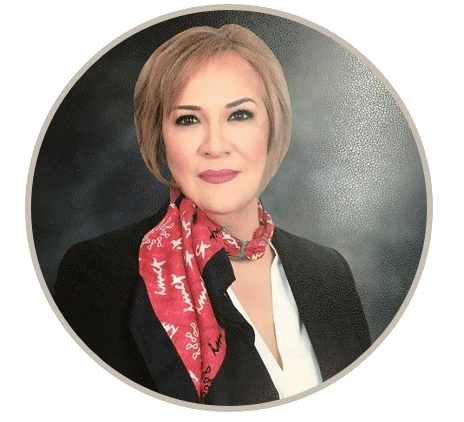-
Financial statements audits
Financial statement audits
-
Compliance audits
Compliance audits
-
Compilations and reviews
Compilations and audit
-
Agreed-upon procedures
Agreed-upon procedures
-
Corporate and business tax
Our trusted teams can prepare corporate tax files and ruling requests, support you with deferrals, accounting procedures and legitimate tax benefits.
-
International tax
Our teams have in-depth knowledge of the relationship between domestic and international tax laws.
-
Tax compliance
Business Tax
-
Individual taxes
Individual taxes
-
Estate and succession planning
Estate and succession planning
-
Global mobility services
Through our global organisation of member firms, we support both companies and individuals, providing insightful solutions to minimise the tax burden for both parties.
-
Sales and use tax and indirect taxes
SUT/ VAT & indirect taxes
-
Tax incentives program
Tax incentives program
-
Transfer Pricing Study
The laws surrounding transfer pricing are becoming ever more complex, as tax affairs of multinational companies are facing scrutiny from media, regulators and the public
-
Business consulting
Our business consulting services can help you improve your operational performance and productivity, adding value throughout your growth life cycle.
-
Forensic and investigative services
At Grant Thornton, we have a wealth of knowledge in forensic services and can support you with issues such as dispute resolution, fraud and insurance claims.
-
Fraud and investigations
The commercial landscape is changing fast. An ever more regulated environment means organizations today must adopt stringent governance and compliance processes. As business has become global, organizations need to adapt to deal with multi-jurisdictional investigations, litigation, and dispute resolution, address the threat of cyber-attack and at the same time protect the organization’s value.
-
Dispute resolutions
Our independent experts are experienced in advising on civil and criminal matters involving contract breaches, partnership disputes, auditor negligence, shareholder disputes and company valuations, disputes for corporates, the public sector and individuals. We act in all forms of dispute resolution, including litigation, arbitration, and mediation.
-
Business risk services
We can help you identify, understand and manage potential risks to safeguard your business and comply with regulatory requirements.
-
Internal audit
We work with our clients to assess their corporate level risk, identify areas of greatest risk and develop appropriate work plans and audit programs to mitigate these risks.
-
Service organization reports
As a service organization, you know how important it is to produce a report for your customers and their auditors that instills confidence and enhances their trust in your services. Grant Thornton Advisory professionals can help you determine which report(s) will satisfy your customers’ needs and provide relevant information to your customers and customers’ auditors that will be a business benefit to you.
-
Transaction advisory services
Transactions are significant events in the life of a business – a successful deal that can have a lasting impact on the future shape of the organizations involved. Because the stakes are high for both buyers and sellers, experience, determination and pragmatism are required to bring deals safely through to conclusion.
-
Mergers and acquisitions
Globalization and company growth ambitions are driving an increase in M&A activity worldwide as businesses look to establish a footprint in countries beyond their own. Even within their own regions, many businesses feel the pressure to acquire in order to establish a strategic presence in new markets, such as those being created by rapid technological innovation.
-
Valuations
We can support you throughout the transaction process – helping achieve the best possible outcome at the point of the transaction and in the longer term.
-
Recovery and reorganization
We provide a wide range of services to recovery and reorganisation professionals, companies and their stakeholders.
 Diversity data expert Jennifer Thorpe-Moscon, PhD, senior director & panel manager, research at Catalyst, on how to build a truly inclusive business.
Diversity data expert Jennifer Thorpe-Moscon, PhD, senior director & panel manager, research at Catalyst, on how to build a truly inclusive business.
An inclusive culture is one in which employees – across all intersections of identity – feel valued for their unique perspectives and experiences, as well as feel a sense of belonging and common ground with their team – that they are an insider. It is not enough to do one or the other. Belonging alone could lead to groupthink or suppress dissention and innovation. Valuing uniqueness alone could make individuals feel isolated or set apart. Thus, it’s critical that both aspects are incorporated at the same time.(i)
It’s also essential to actively consider intersections of identity in inclusion efforts. Programs that look to include “women” often only make positive change for white women because they do not consider how the experience of gender is transformed by race/ethnicity. Women of colour face unique challenges and thus employers seeking to create inclusion must actively, consciously address the intersection of gender, race, and ethnicity in their efforts if they wish to benefit from all talent and perspectives(ii).
Be an inclusive leader
There are several key inclusive leadership behaviors that anyone can employ:
- Empowerment: enable others to succeed. Provide them with the resources to do their jobs. Trust them to accomplish their work in the ways that are best for them.
- Accountability: hold others responsible for outcomes they can control. By doing that, you demonstrate trust that they can accomplish their goals.
- Courage: speak up when something needs saying, even if it’s risky, especially if you see bias in your midst. Support your colleagues’ good-but-risky ideas.
- Humility: recognise that you do not have all the answers. Seek the perspectives of others to supplement and fill the gaps in your own understanding.(iii)
These key leadership behaviors drive the inclusive environments that will help your business and employees thrive.
Know where you are
What is measured gets done. If companies do not know where there are gaps in representation – spaces where there is homogeneity, which contributes to groupthink and prevents the introduction of new experiences and ideas – they cannot begin to fix the problem. Companies must measure their representation at all levels and in all business units. Moreover, they must look at multiple identities and intersections of identity. Are women of colour represented across your company, including and importantly in leadership positions? Do you have a robust, diverse talent pool to advance and promote?
But this is only the first step. Representation is necessary but not sufficient to create the innovative, prosperous workplaces of the future. A company cannot put someone into a role and expect them to succeed if their voice and perspective is not heard and valued. For your company to reap the many benefits of a diverse workforce, it must ensure all voices are included.
Read our Women in business report Return to Champions home page
Footnotes
(i) Jeanine Prime and Elizabeth R. Salib, Inclusive Leadership: The View From Six Countries (Catalyst, 2014).
(ii) Dnika J. Travis and Jennifer Thorpe-Moscon, Day-to-day Experiences of Emotional Tax Among Women and Men of Color in the Workplace (Catalyst, 2018).
(iii) Jeanine Prime and Elizabeth R. Salib, Inclusive Leadership: The View From Six Countries (Catalyst, 2014).

















